Skier’s Guide to Breckenridge

(PRINTABLE / FOLDABLE POCKET GUIDE BELOW)
You have the resort and you have the town. It’s the two together that make Breckenridge one of North America’s quintessential ski communities. And the draw is undeniable, as in two rather dubious distinctions. Behind big sister Vail, it has the second most skier visits and second highest ticket prices in the US. Despite this, the skiers keep coming. What’s the draw? The town has an endless variety of shopping, dining, and partying venues, and the mountain has a similar character of choices with plenty for everybody. Some knock it for its crowds, over-the-top social scene, and legendary wind chill. But, it’s popular for a reason. Some folks love the apres ski as much as the ski, and yes, Burrreckenfridge is high.
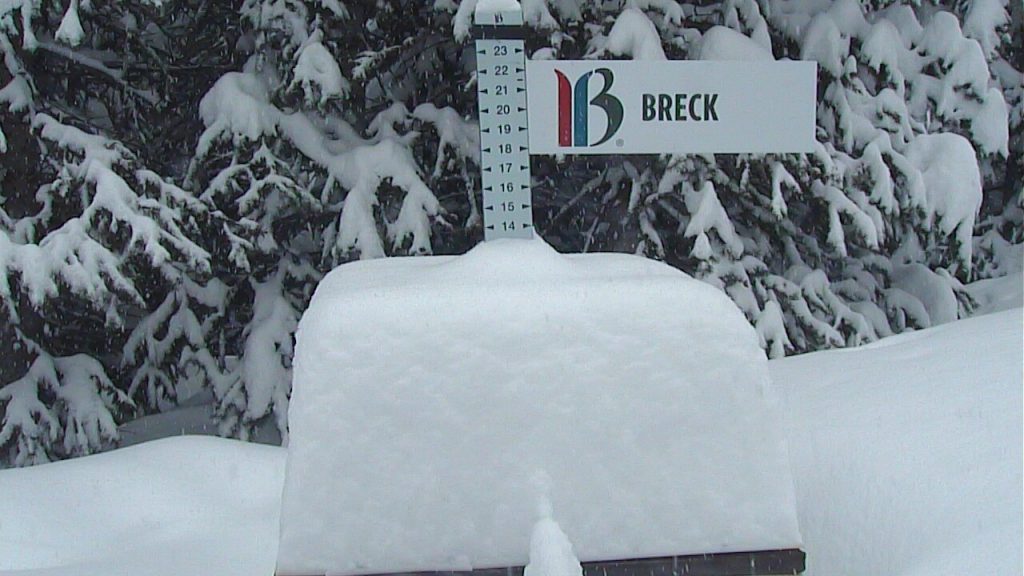
Breck sits on the spectacular Ten Mile Range extending from Peak 1 above Frisco, Co extending south to the 14,265’ Mt. Quandry. The resort sits in the middle, occupying the east faces of Peaks 6 thru 10. At over 3000’ vertical, nearly 3000 acres, and 30 lifts, it is undeniably a big place.
Admittedly, while Breck has some nice long groomers, decent tree skiing, and some good bump runs, they are not Summit County’s best. But Breck does have a trump card, and it could be called “adventurous” terrain. Other than A-basin, only Breck has true high alpine big mountain terrain, and in this category Breck is the undisputed champ. Not only does it have a lot of it, but much of it is in the very steep, high adrenalin, “no fall zone” variety with vertical cornices and pitches up to 55 degrees. So if you’re looking for the “real deal” somewhere south of Jackson Hole and north of Telluride, Breck would be the place to test your skills.
- Parking
- Lift Access & Planning
- Groomers
- Bumps
- Trees
- Bowls & Chutes
- Powder Days
- Hike-To terrain
PARKING
This is a sore subject for most, but Breck does have ample parking and like anywhere else, price is based on proximity and ranges from free to $20. I won’t get into too great of detail here and you can find specifics, maps, and directions on the resort website.
Free parking is found in the north satellite area off Airport Rd. The circulating shuttles should have you over to the gondola 10 or 15 minutes tops.
Cheapest Pay Parking is found Mon-Thur in the South Gondola Lot and daily in the Ice Rink lot at the south end of town. The Gondola Lot is quite convenient with just a short walk to the gondy. The Ice Rink has the advantage of being paved, so no mud, but a short shuttle ride is required. (The N Gondola Lot will have a covered parking garage and is currently under construction. I am expecting it to be expensive).
Not as Cheap Parking can be found in the same South Gondola and Gold Rush Lots on Fri-Sun and Peak Days and the F Lot. The F Lot is paved and is a short walk from the Peak 9 Village Base Area and Quicksilver Lift.
Expensive Parking is at the Beaver Run Lot for Mon-Thu and even more $$ on Fri-Sun & peak days. This would be your quickest access to getting straight on the Peak 9 slopes.
There are also season parking passes available for all lots and a carpool incentive savings for four or more in your vehicle. All paid parking is now done at kiosks. If you don’t want to wait in line and freeze your fingers off, download the Passport Parking App to your phone. For more updated and detailed info, consult the resort website.
LIFT ACCESS and PLANNING
Breck has a total of 34 lifts, but only 3 of them allow access to the mountain from town or the parking lots.
The Gondola/Breck Station area is the main access point and does not serve any skiing terrain, but serves only to get you up to the Peak 7 & 8 base areas and lifts. It has three stops on the way up. The first stop is “no exit / load only” for some condos and homes at Shock Hill. The second stop is at the Peak 7 base area and accesses Independence Chair. The third and final stop is at the Peak 8 base area and accesses the Colorado and Rocky Mountain Chairs.
If you need to get back and forth from Peak 7 to Peak 8 base areas, the Gondola is the quickest option. It also serves as an alternative to skiing Lower Four O’Clock run to return back down to Breck Station and the parking lots. Finally, it is free, so anyone can ride it and if the lift ticket line at the bottom is long, just ride it up and purchase your ticket at the top.
The other main access point is the Village Base Area via the Quicksilver Lift. You can walk from the F-Lot or there are bus stops from the Ice Rink parking. This can be a good alternative to the Gondola depending on where you’re parked or staying, or if you just want to access Peaks 9 or 10 early. But beware! The Ski School crush is the worst on Quicksilver, so avoid it between 9:30 and 10:30am (and then avoid it for the rest of the day if you can).
The Beaver Run Lift is the only other access point and it is less crowded than Quicksilver and less prone to constant stoppages, but only practical if you’re parked or staying at the Beaver Run Resort. Although the Breck Free Ride bus can get you up there too.
Once you’re up on the hill, it’s time to ski. Starting from Peak 7, you’ll head up the Independence Chair. This chairlift can stay busy, so most use it only when necessary. Peak 7 has a few nice long groomers, but most use this lift to head over to Peak 6. From the top of Independence, Peak 6 and the fixed-grip Kensho Chair area can be accessed by staying skiers left down to the annoyingly slow, but thankfully short Zendo Chair or taking a shortcut on Wanderlust directly to Kensho. Step uphill a bit next to the warming hut and then bear as high to your left as you can all the way or you’ll miss it and end up at Zendo anyway. Once on the normally uncrowded Kensho Lift, Peak 6 offers some great terrain worthy of numerous laps.
Once you’ve had enough, you can head back south. The Independence Chair on Peak 7 is a way to get to Peak 6 or a fast way to get to the T-Bar, but otherwise offers only easy groomers, so head for Peak 8. The fastest way is to take Lost Horizon down to the Peak 7 base area and cut all the way over to the Gondola for a quick 2 minute ride over to Peak 8.
Peak 8 is the original core of Breckenridge and still the epicenter. The Colorado and Rocky Mountain Lifts lead to some massive acreage. There is some decent terrain under the lifts plus the signature “Big” Terrain Park, but the real draw is access to the T-Bar and 6-Chair / Imperial Lift areas.
The Rocky Mountain Chair is the best choice to get the T-Bar and usually has a bit shorter line. The Colorado Chair gives access to the 6-Chair and then the Imperial Lift.
Continuing south, catch the E-Chair up to Peak 9. Avoid the lower half of Peak 9, it is very flat and dominated by ski school classes. The Quicksilver and Beaver Run lifts can be used for mountain access, but after that, the upper half is best accessed by the Mercury Lift and offers some of Breck’s best selection of groomers and low angle bumps.
Continuing south, all of Peak 10 is very simply served by the Falcon Lift.To return north, just make your way over to the Peak 8 SuperConnect Lift.
GROOMERS
Although not its forte, Breck does have some worthy groomed terrain. Its beginner groomed terrain is probably unsurpassed, but for those wanting to rail some high speed turns, here’s where to look.
Starting on Peak 6, Daydream, Reverie, and Déjà Vu make nice, but short finishes to the quality terrain above.
Peak 7 lacks the kind of pitch you’re looking for, but one run – Claimjumper is pretty sweet for Super G type turns from top to bottom.
Frankly, lower Peak 8 is normally just too busy to really enjoy any of the groomers, but if you happen to catch the 8:30am opening, Spruce is good for at least a couple worthy laps. On upper Peak 8, off the T-Bar, Pika can be nice and also Alpine Alley/Upper Four O’Clock.
The upper half of Peak 9 has Breck’s best selection of groomers. Avoid the lower part of the mountain by sticking to the Mercury Lift. Cashier is a great low angle groomer, and the Country Boy variation at the end is very sweet. For higher angle choices, Columbia, American, Peerless, and Volunteer can all be good. (Avoid Bonanza since it is a family slow zone).
Peak 10 can be very sweet or very sour. For whatever reason, the four main groomers are subject to getting very scraped off and icy. But on those occasions when they’re not, and conditions allow you to get a grip, Crystal, Centennial, Doublejack, and Cimarron can all be high speed ripping good fun.
BUMPS

Compared to other resorts of its size, Breckenridge doesn’t actually have the amount of dedicated mogul terrain you would expect. Granted, almost any terrain with enough pitch, including bowls and glades will eventually bump up if left alone, but let’s talk about where to go if your primary objective is to ski bumps.
Starting on the north again, you can pretty much skip both Peaks 6 and 7.
On Peak 8 between the Colorado and Rocky Mountain Chairs you have a smattering of easy pitches, but they are short and a bit disjointed. On the south side of Peak 8 is where you begin to find some worthy runs.
Heading around toward 6-Chair, you could drop into Tiger or Southern Cross, both of which can be nice if the south exposures are soft. You could also take the Four O’Clock ridge down to Mach 1. This was Breck’s original test-piece attracting the likes of Wayne Wong back in the 70s. It definitely seemed more intimidating on 210s back then than it does now.
Again, if the snow is fresh or soft, taking 6-Chair also offers some fun laps in the all tree lanes on skier’s right of the chair.
Taking the E-Chair up to Peak 9, gets you access to the seriously steep tree lanes on the North Slope. From Tom’s Mom over to mine Shaft, the north exposure usually keeps the snow soft, but the steep pitch can be easily scraped down to the dirt. The runs further east from the top of the lift like Devil’s Crotch and Mine Shaft see less traffic and are worth exploring.
Peak 9 also offers some nice low angle bumps for those wanting to learn or just take it easier. Under the C-Chair on American and parts of Peerless, Gold King, and Volunteer will usually have a nice section of smaller bumps to sample or bail back out onto the groomer if you choose.
IMHO, Peak 10 should have Breck’s “signature” bump run, but instead has some good ones. All four front side runs have the perfect consistent pitch and length to be a classic bump run. But unfortunately all four are routinely groomed yielding the same character on all???
Oh well, Peak 10 still probably has the best bump runs on the mountain in Spitfire and Corsair. They both have an angling fall line, but consistent pitch and snow conditions give both these runs an A grade. Also, they often leave a bump lane on Crystal right under the chair lift which joins with Grits at the bottom.
The Mustang area on the south face of Peak 10 also has some steep bumps, but the pitches are broken up and short for more of a backcountry feel rather than a place to ski bumps.
TREES
Since the forest grows rather thick on the Ten mile Range, finding good quality tree skiing at Breck takes a bit of poking around.

Starting at the north on Peak 6, the bottom of Wonderland has some nice adventurous lines by trending skier’s left down the drainage toward the bottom of Intuition. There are some alley ways below Euphoria, but they can be hit or miss quality. Moving over to Xanadu and down through the Wanderlust and Ore Bucket areas on Peak 7 is really pretty and has a remote feel, but the overall pitch is rather mellow.
On Peak 8 between the Colorado and Rocky Mountain Chairs are some short tree shots between the runs. The 6-Chair area is really more defined tree lanes, but the further you go skier’s right, the less defined it becomes.
The same thing applies to the E-Chair/North Slope and Windows areas on Peak 9. Predominately steep lanes, but good potential for side excursions and the further you venture in either direction from the top of the lift the less traffic you’ll see.
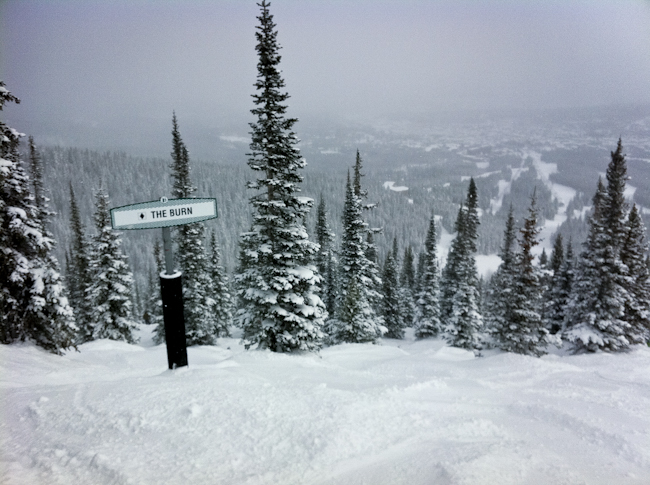
Peak 10 has The Burn, which is arguably Breck’s only true gladed terrain. The pitch is stout and the trees are well spaced over a large area, but this is a popular area and will tend to get bumped out quickly. Finally, on the south side of Peak 10 is the Mustang area. All the runs in this area have a backcountry feel with sporadic trees and great potential to dive on the side wherever. The terrain is stepped with short steep pitches and the south exposure can be crusty when cold or corny when warm.
Lift Accessed
BOWLS and CHUTES
For the expert skier, this is Breck’s forte. Based on total acreage, Breck probably offers more above tree line open bowl terrain than any other resort in Colorado. Stretching continuously along Peaks 6,7, and 8, this is a massive amount of terrain and it’s all subject to regular closures for avy control, wind, or visibility.
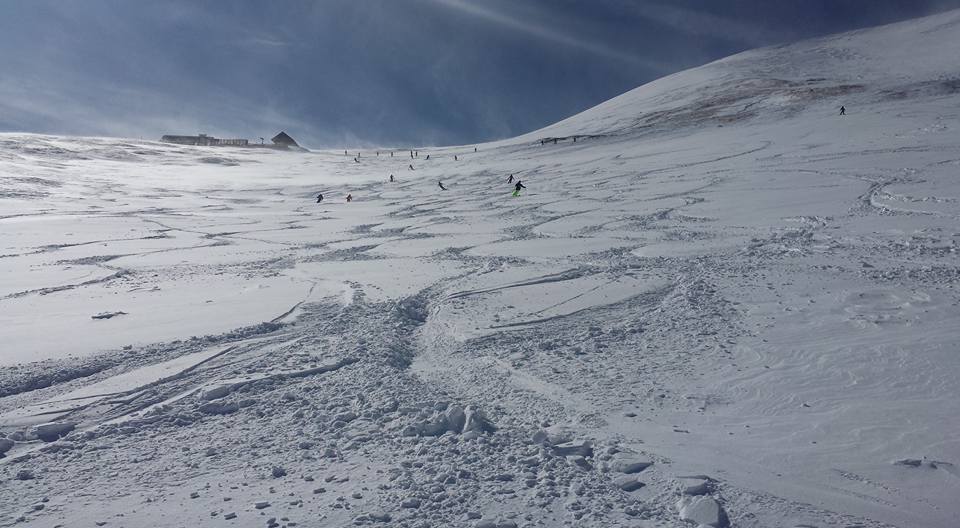
Starting at the north again, the Kensho Lift accesses Intuition – which is lower Beyond Bowl, and Bliss – which is lower Serenity Bowl. Intuition can be very good, especially if you traverse as high and long as you can. But to really get the good stuff – Beyond, Serenity, and Six Senses Bowls, you need to make the short, but strenuous hike to the top of the ridge (see Hike-To Terrain below).
Moving south, we come to the ever popular T-Bar. It’s popular because it serves so much quality terrain from Debbies Alley on the north to Contest Bowl on the south. The south side of Horseshoe stays shaded and fresh and as windy as Breck can be, this whole area can provide fresh “wind fill” long after a storm if you’re willing to go sniff it out.
Finally, there is North America’s highest lift – Imperial Express. Traversing north from the top of the lift yields massive open terrain. Whale’s Tail bowl is huge and popular, but a continued traverse over to the Peak 7 or very steep Art’s Bowl can be worth it even if it requires gingerly negotiating some wind scoured sections. The Dunes is a rarely skied area and the very definition of “adventurous” mentioned in the intro.
POWDER DAYS
Because this is a rather sensitive subject and I don’t want to ruffle any feathers, I’ll keep this very general and leave it at that. The good news is that the sheer size and nature of Breck’s terrain almost guarantees some great turns if you get out early.
Due to the sheer volume of Breck’s high alpine, avalanche prone terrain, it normally takes a while after a storm , sometimes even days, to get it open. Your biggest challenge to catching fresh lines may be timing lift-openings and rope-drops, rather than getting “first chair”. This can often boil down to a matter of luck, but keep an eye out for small sign boards put out at the tops of the open lifts for the latest status. Once they get the Kensho, T-Bar, and Imperial lifts open, the terrain can still remain quite limited, and hikes closed for a while. The good news is you can score fresh lines days after a storm if you happen to be in the right place at the right time.
All of the afore mentioned Hike-To terrain will be great if it’s open and you want to kick some new steps, but for the just lift-served goods consider the following:
Peak 6 offers wide open terrain and bowls on either side of the Kensho lift. Intuition, Wonderland, and the face just skiers right of the lift can be primo. Unfortunately, the trees below in this area are quite tight and it’s difficult to keep a consistent line.
Peak 8 has tons of possibilities up high extending from Imperial Bowl over to Peak 7 on the north, all without hiking. Imperial bowl and Horseshoe Bowl will tend to get tracked out the quickest, so either be among the first, or venture sideways and you should find untouched lines for a quite a while.
All of the 6-Chair runs should be good early and offer some nice open tree lanes and glades. Be prepared for some moguls under the pow.
Peak 9 offers some steep tree lanes under E-Chair, but they are quite narrow, so it won’t take but a few first tracks to finish them off.
Peak 10 has “The Burn”, which is probably Breck’s best gladed tree skiing. It should be great early, but due to its popularity will get chopped up quickly. Consider two particularly nice bump runs on the north side – Spitfire and Corsair. If you like chopped fluff bumps, these north facing runs should be nice all day.
Finally on the very south side is the Mustang area. The upside is high stash potential and interesting pitches, but the downside is that they are fairly short and the cat track out of there is a flat PITA – snowboarders beware!
HIKE-TO TERRAIN
Breck has an abundance of “big mountain” terrain and a fair share of boot track hiking for those who desire to get a bit more adventurous. Most of the better bowl lines and chutes are only accessible via a short hike. Peaks 6 and 8 offer open, above tree line terrain, while Peaks 9 and 10 are at or below tree line. Breck does a nice job of respecting hikers by using semi-permanent fencing to keep lift served skiers from encroaching on terrain from below.
The trail map shows ‘Hike–To” access on Peaks 6, 8, and 9, but there is also access from Peak 10 which is not shown, since it is the only true exit gate from the resort. So while 6, 8, & 9 actually have a daily Ski Patrol sweep and limited avy control, 10 does not. A resort “Exit Gate” is just that – YOU ARE ON YOUR OWN and need to be properly trained and equipped to proceed.
All the hikes are fairly short and are basically a continuation up the ridge from where the lift ends. Entries are very easy to spot with either signs or gates.
Inbounds avalanches can and do occur, and tree wells abound. As always, a partner, a whistle, and avy gear are recommended. NEVER duck any ropes!
Peak 6:
From the top of the Kensho Lift, this may be the most difficult hike of the bunch and at 300’ vert, is deceivingly longer and harder than it looks. Still, in only about 20 min. you’re at the Peak 6 summit with spectacular views in all directions and Copper Mountain to the west.

Heading looker’s left or south takes you to Serenity Bowl and beyond that to the Six Senses. These are some very steep chutes with cornice entries and the furthest of these is the striking ESP Chute. Also, venturing a little further south to the Sanctuary – Epiphany area on the right day can be money. Most of the terrain in Serenity and Six Senses is rated double-black diamond. The area is about 50 degrees at the top with a lot of rocks and cliffs, which gives it an ‘EX’ (extreme terrain) designation. The overall slope angle in that area is about 45 degrees.

On the other hand, heading north brings you to the top of the impressive Beyond Bowl. This large, wide open bowl serves as the resort’s northern boundary and can yield about a 1000 vertical feet of continuous pitch with an easy runout at the bottom. Since only the very south edge is lift-served on Intuition, the rest remains waiting for only those willing to kick some steps. There is a resort exit gate on the ridge at the far north end of the bowl, but the dangerous terrain demands only properly trained and equipped parties venture out!!!
Peak 8:
From the top of the Imperial Lift is probably the most popular boot-pack at Breck and for good reason. It’s a bit shorter than Peak 6 at 160’ vert, and in about 15 minutes you’re at nearly 13,000’ with tons of terrain options in either direction.
To the south are the Lake Chutes and Snow White areas with some of Breck’s steepest pitches at 55 degrees plus with cornice entries. Combined with any of the 6-Chair runs below, this provides a long, steep, above and below tree line run. The Elevator is the signature chute, and like ESP to the north, is steep, but safe. As you can see from the photo, rocky nastiness abounds elsewhere.
LAKES CHUTES

Photo credit to www.rootsrated.com
Further south to the Snow White area is mellower, but being south facing is rarely open. Exiting the area with a traverse south below Diagonal in the photo above yields a nice drop into the resort boundary and to the bottom of 6-Chair.
Heading north gives you a vast expanse of bowl terrain extending through Whale’s Tail and over to the Peak 7 summit, but doesn’t yield much more than getting right off the lift.
Peak 9:
From the top of the Mercury Lift, this pleasant hike starts below tree line and meanders along a groomed cat track (dirt road to the Peak 10 weather station) that continues up the ridge.
Follow it as far as you like as you pass the Windows area on your right. Look for the first clearings, known as the Broadway area and the sooner you drop, it will yield steeper and longer tree lines. Continuing on up brings you to the tree line and some nice small bowl/chutes known as the Twin Chutes, but the terrain flattens and shortens as the valley floor rises. If you go far enough, you will actually encounter an exit gate and you’re on your own.
(Do not duck the rope on the left side of the trail. The exit gate mentioned further up the trail would allow one to drop into Billy’s Bowl on the left, or south side of the ridge, but this is not recommended due to consistent avy dangers).
Egress at the bottom is a bit tight and fussy in spots, but staying with the high tracks and out of the creek bottom will get you back to the base of E-Chair.
Peak 10:
As you get off the Falcon Lift, head directly up to the exit gate above. BEWARE: you are leaving the resort and there is no Ski Patrol or avy control in this area. This boot-pack meanders through scrubby trees along the ridge top. There is no control here, and you can go wherever you like, so a partner and avy pack is highly recommended. The north side of the ridge is called the Ballroom and the south side the Numbers. Like Peak 9, the gulley egress on the north side is a bit of a PITA.
For more detailed info and current safety conditions, please inquire at the Ski Patrol shack at the top of the lift before heading out.
The hike is casual and beautiful, so enjoy the experience more than the reward.
There is also another exit gate at the far southern end of the resort off of Mustang. No hiking involved here and the terrain looks limited, but feel free to check it out.
(print two pages front and back)
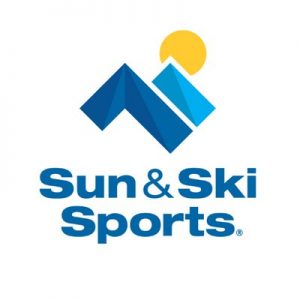
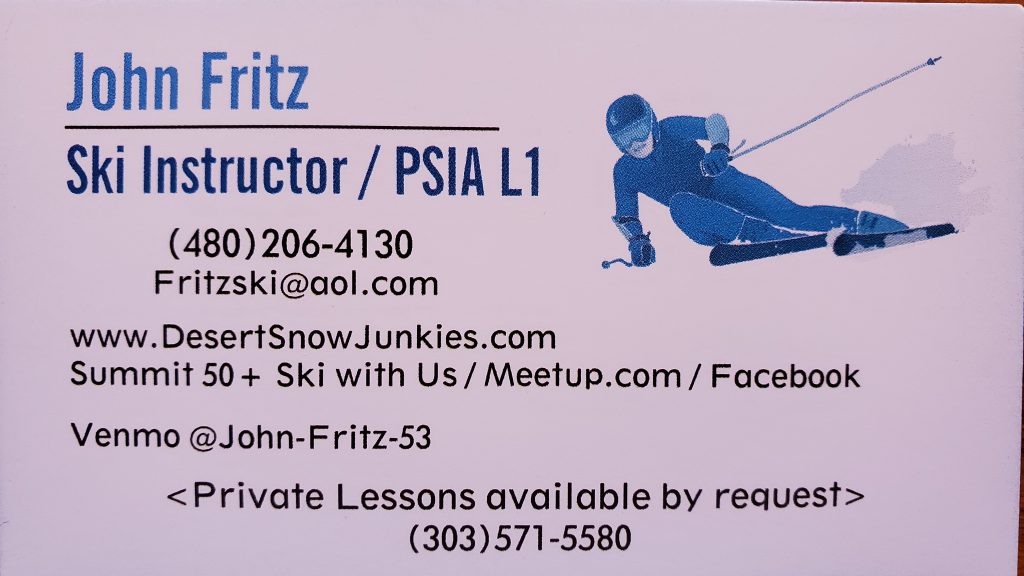


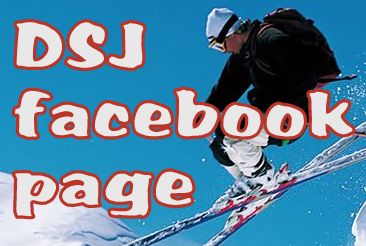
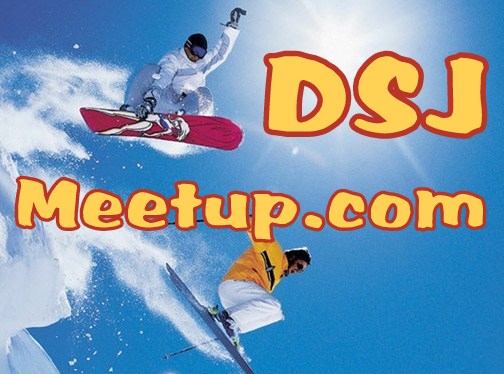
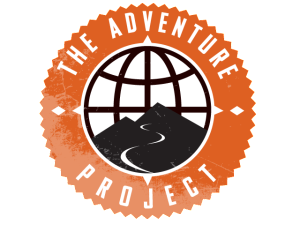
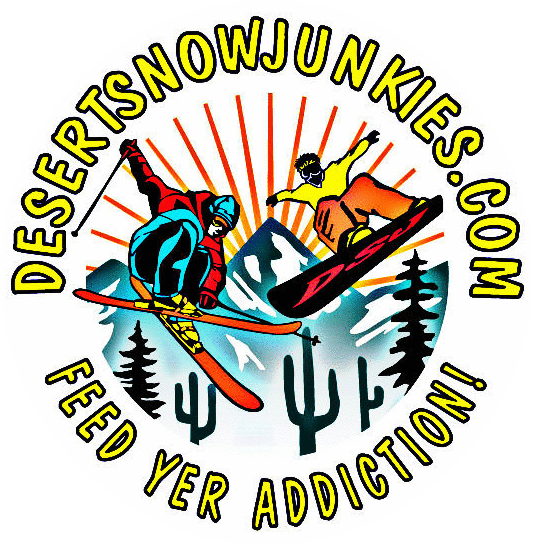
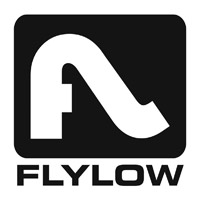
Very cool. Thanks John. See you on Stag Islabd soon!!
Scott
Another gorgeous ski guide from Mr Fritz. At the risk of sounding greedy, might there be additional guides for Summit County and its environs in the works? Thank you!
Thank you for the positive feedback Ken. Always appreciated. Only guides for Breck and Keystone where I’ll be doing some volunteer guiding next season. Possibly one Copper down the road as I get more time on that mountain.